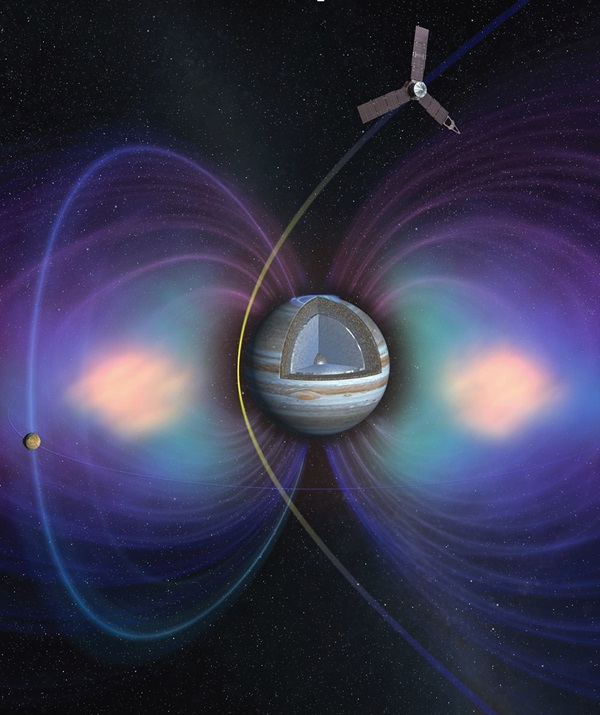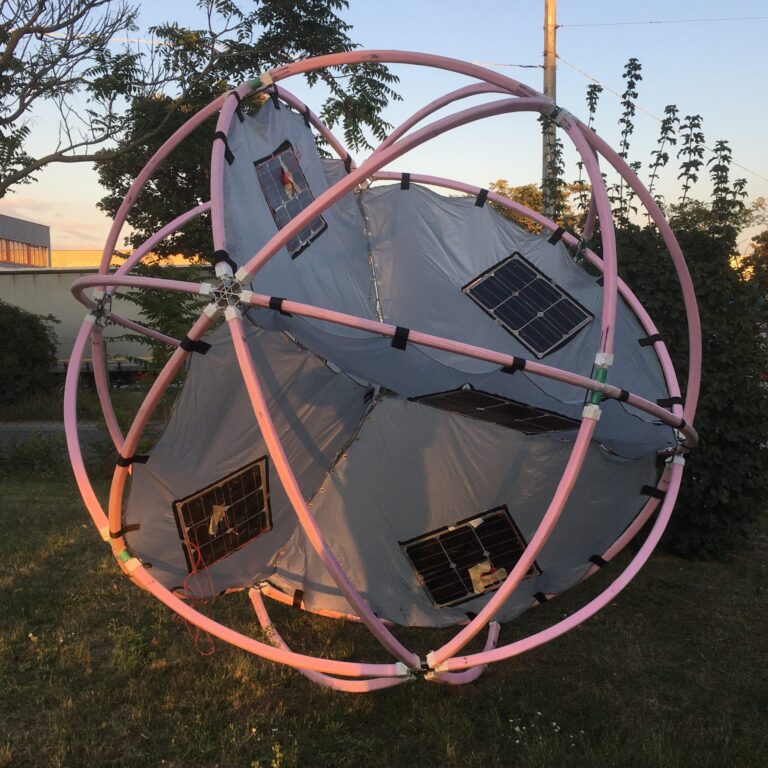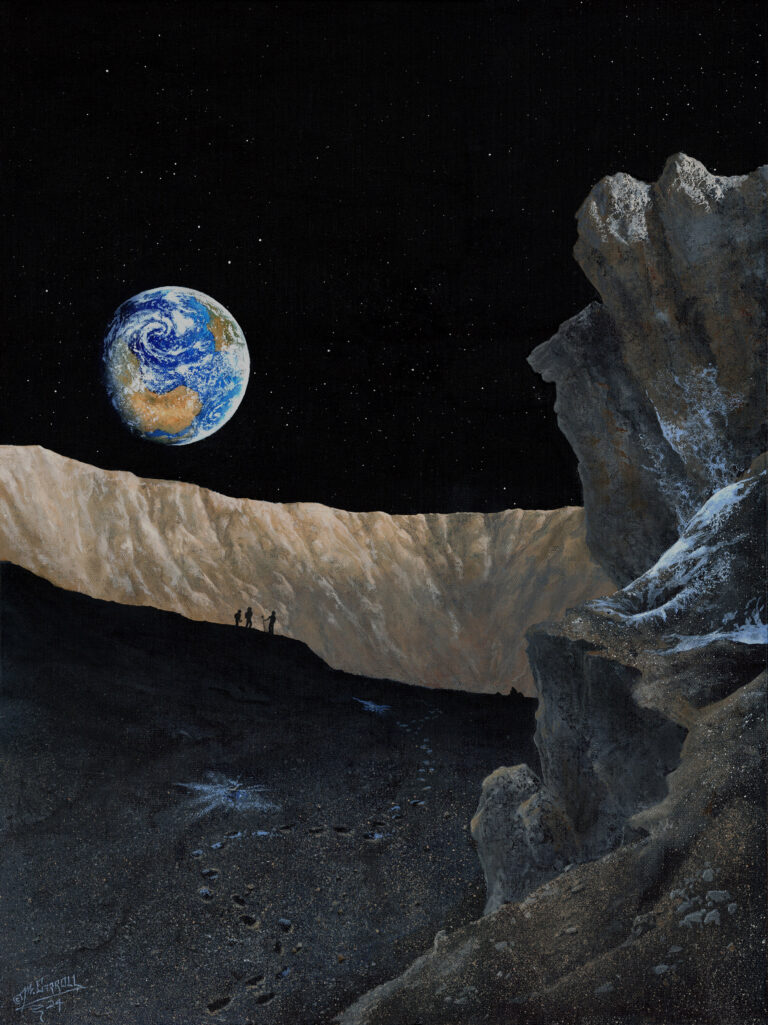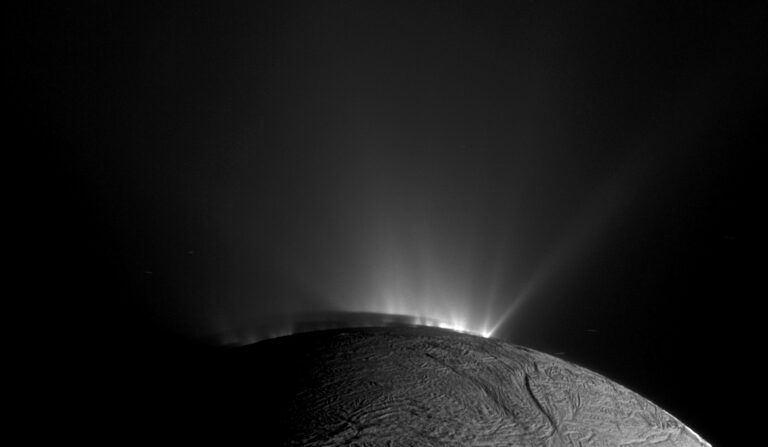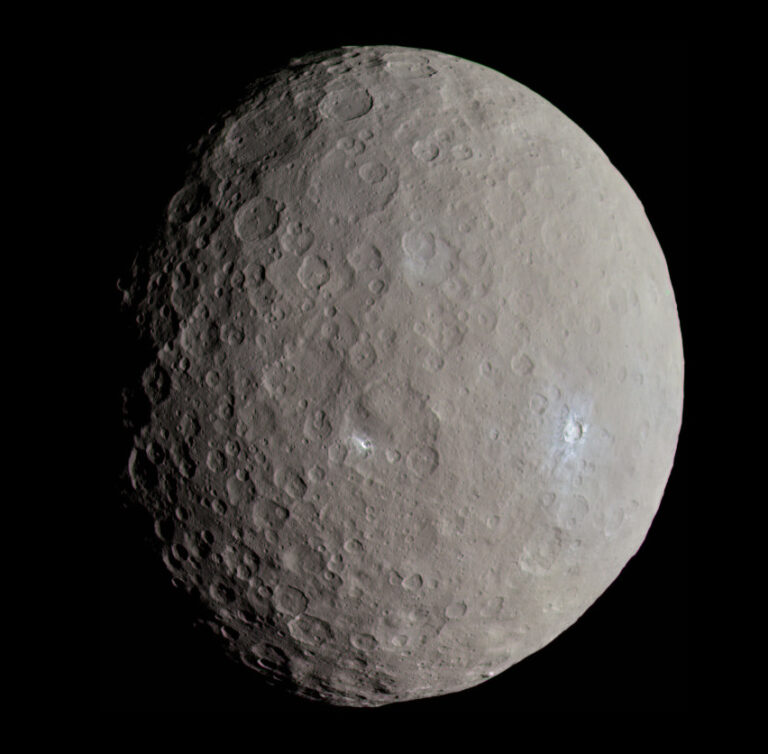Key Takeaways:
- Jupiter possesses the solar system's most powerful magnetic field, forming a vast magnetosphere extending far beyond its moons.
- Jupiter's intense radiation belts, composed of high-energy electrons and ions (protons, oxygen, and sulfur), originate from a combination of particles escaping Jupiter's ionosphere, solar wind influx, and predominantly, volcanic emissions from Io.
- The extreme radiation intensity results from the interplay of Jupiter's strong magnetic field, Io's substantial particle contribution, and the planet's rapid rotation, creating a doughnut-shaped radiation belt around its equator.
- While other planets (Saturn, Uranus, Neptune) also have radiation belts, Jupiter's are significantly more intense, with NASA's Juno spacecraft designed to endure substantial radiation exposure during its polar orbit.
Q: What is the source of Jupiter’s radiation, and what type of radiation is it? Why is it so intense, and are there other planets in our solar system with similar radiation fields?
Dean A. Treadway
Knoxville, Tennessee
A: Not surprisingly, the king of the planets has the strongest magnetic field among the planets of our solar system, with a reach extending far beyond its orbiting moons. The huge region around the planet where Jupiter’s magnetic field controls the environment is called its magnetosphere.
Any charged particles in the space around Jupiter will experience the planet’s strong magnetic field and get accelerated to high energies. These negatively charged electrons and positively charged ions of hydrogen (i.e., protons), oxygen, and sulfur form Jupiter’s radiation belts. The source of the protons is some combination of particles escaping from Jupiter’s ionized atmosphere (the ionosphere) and particles leaking in from the solar wind. The dominant particle source, however, is the volcanic moon Io, which dumps a ton per second of sulfur dioxide gas into space where the molecules are broken up and ionized. These processes around the moon drive million-amp currents between Io and Jupiter’s ionosphere, where they excite intense aurorae on the planet.
The highest fluxes of energetic particles are found closest to the planet, where they form a doughnut-shaped belt around the equator (which causes radio emission that astronomers have measured from Earth since the 1960s).
Most spacecraft avoid the radiation belts and the damage they cause to sensitive electronics. But the polar orbit of NASA’s Juno spacecraft will evolve, and the craft will eventually cross the radiation belts, receiving a dosage equivalent to about 10 million dental X-rays!
It is Jupiter’s combination of a strong magnetic field, Io’s prodigious source, and the magnetic coupling of charged particles to the planet’s rapid (10-hour) spin that drives the intense radiation. Earth’s radiation belts (named after James Van Allen, who discovered them with the U.S.’s first satellite in 1958) are much weaker. Saturn, Uranus, and Neptune also have radiation belts — but, again, these are much weaker than Jupiter’s.
Jupiter’s magnetosphere is the largest structure in the solar system. Its size varies with fluctuations in the solar wind, but on average this magnetic bubble is around 12 million miles (20 million kilometers) wide. That’s about 150 times wider than the planet itself, and almost 15 times wider than the Sun. The Sun’s own wind of charged particles streams past Jupiter, stretching the planet’s magnetosphere into a tadpole shape. Its long tail reaches all the way to Saturn’s orbit — roughly twice as far from the Sun as Jupiter.
Fran Bagenal
Professor of Astrophysical and Planetary Sciences and Juno Co-Investigator, University of Colorado, Boulder

